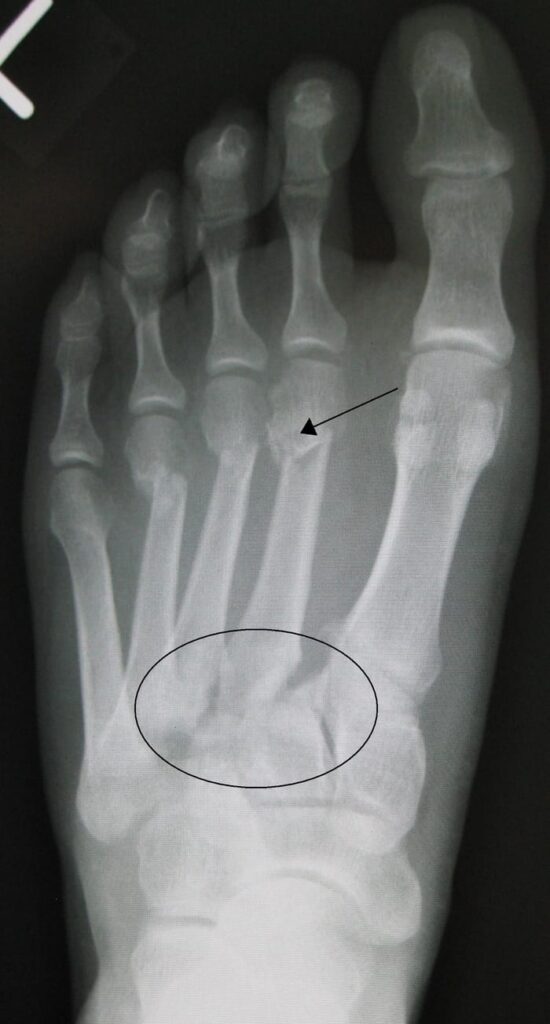A lisfranc fracture is a fracture of a bone in the midfoot area or a tear in the ligament. The midfoot is the area that makes up the arch and it is the connection between the forefoot and hindfoot. A Lisfranc fracture is one of the most common injuries to the foot.
Symptoms of Lisfranc Fracture:
Symptoms of a Lisfranc Fracture depend on the severity of the fracture as well as the injury. Normal side effects include pain and swelling at the point of injury and referred to other parts of the foot. The severity of the fracture and pain may worsen if proper treatment and rest is not taken in the acute phase of the fracture.
Swelling can happen on both the top and lower part of your foot also. Swelling on the lower part of your foot is the most obvious sign that you have fractured.
Causes of Lisfranc Fracture:
There are several causes of how a Lisfranc fracture can occur, but the most common is trauma to the Lisfranc bone caused by twisting your foot while falling. A crush injury or damage to the midfoot while flexed can also cause a Lisfranc fracture. This usually causes a mild injury
However, a direct injury can cause a much more severe type of fracture. For instance, falling from a height has been known to cause Lisfranc fractures that require surgical treatment.
Treatment of Lisfranc Fracture:
If you have a Lisfranc fracture, you should seek treatment as soon as possible. Here are some reasons why:
- The sooner you seek treatment, the better your chances of a good outcome.
- Treatment with a cast or crutches will help you to heal faster.
- Surgery may be needed if the fracture is severe.
- If you have a Lisfranc fracture, you may need to use a wheelchair or a walker for a period of time after treatment.
Physical therapy for a Lisfranc fracture includes a combination of exercises, medications, and surgery.
Exercises:
The exercises that are prescribed for a Lisfranc fracture typically focus on the foot and ankle joints. These exercises should be done as a series, three times per day, for the first week. The exercises may also be done in combination with weight-bearing exercises. The goal is to improve the range of motion and flexibility in the ankle and foot joints.
Medications:
Medications are also prescribed for a Lisfranc fracture. These medications may help with pain relief and the healing process.
Lisfranc fracture can be caused due to severe injury. However, timely treatment after consulting with your Podiatrist may decrease the symptoms.
Dr Zubeen Mistry at DFW Foot and Ankle care offers treatment for a Lisfranc fracture. If you have any questions about amniotic stem cell injections or would like to schedule an appointment with Dr Zubeen Mistry, contact our office at (469) 551-8595.


